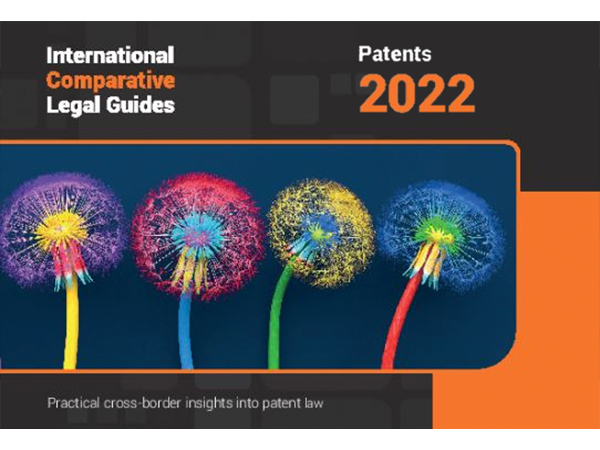
Intellectual Property
Viewpoints
Filter by:
Ninth Circuit Upholds Judge Robart’s RAND Determinations in Microsoft v. Motorola
August 14, 2015 | Alert | By Rich Gervase, Bruce Sokler, Sandra Badin, Michael Renaud
Late last month, the Ninth Circuit Court of Appeals issued its much-anticipated decision in Microsoft v. Motorola, a breach of contract action brought by Microsoft alleging that Motorola violated its commitment to license its standard essential patents (SEPs) on reasonable and non-discriminatory (RAND) terms.
Read more
In Akamai v. Limelight, Unanimous Federal Circuit Outlines Framework for Direct Infringement of Method Claims
August 14, 2015 | Blog | By Michael Renaud, Sandra Badin
In a unanimous full court decision issued yesterday, the Federal Circuit availed itself of “the opportunity to revisit the § 271(a) question” left unanswered by the Supreme Court last year, and outlined “the governing legal framework for direct infringement” of method claims.
Read more
Draft Legislation Proposes Favorable Treatment for Intellectual Property Transferred to the United States
August 13, 2015 | Blog
On July 29, Representatives Charles Boustany, Jr. (R-La.) and Richard E. Neal (D. Mass.) introduced draft legislation to the House Ways and Means Committee that would provide favorable tax treatment on certain intellectual property as a means of encouraging U.S. companies to bring their intellectual property back into the United States.
Read more
ClearCorrect v. ITC: Federal Circuit Hears Argument in Case Which Will Decide Whether ITC Has Jurisdiction Over Digital Imports
August 12, 2015 | Blog | By Nick Armington
On Tuesday, August 11, the Federal Circuit heard oral arguments in ClearCorrect v. International Trade Commission, a case that will decide whether the ITC has the power to exclude intangible items that are imported digitally rather than physically.
Read more
Suprema v. ITC: En Banc Federal Circuit Overturns Panel Decision, Finds ITC Has Jurisdiction Over Induced Infringement of Method Claims
August 11, 2015 | Blog | By Nick Armington
Yesterday morning, the full Federal Circuit issued its en banc opinion in Suprema, Inc. v. ITC and reversed the controversial Federal Circuit opinion that had effectively precluded the International Trade Commission from finding induced infringement in most cases involving method claims.
Read more
ALJ Shaw Confirms ITC’s Post-Suprema Authority to Exclude Articles That Infringe After Importation Based on Contributory Infringement
August 10, 2015 | Blog | By Matthew Karambelas
The International Trade Commission has recently released the public version of the Administrative Law Judge’s Final Initial Determination in Certain Marine Sonar Imaging Devices, Including Downscan and Sidescan Devices, Products Containing the Same, and Components Thereof, Inv. No. 337-TA-921, Init Det. (July 2, 2015).
Read more
Expediting Patent Prosecution with the New Collaborative Search Pilot Program
August 7, 2015 | Blog | By Christina Sperry
Two new Collaboration Search Pilot Programs are or will soon be available to patent applicants. The Collaboration Search Pilot Program (CSP) between the United States Patent and Trademark Office (USPTO) and the Japan Patent Office (JPO) is available as of August 1, 2015.
Read more
USPTO Issues Newly Updated Guidance on Subject Matter Eligibility that Further Clarifies Examination Standards under 35 U.S.C. §101 in Light of Alice v. CLS Bank
August 4, 2015 | Alert | By Michael Van Loy
Over the past few years, the Supreme Court’s decisions in Alice (Alice Corp. v. CLS Bank Int’l, 134 S.Ct. 2347 (2014)) and Mayo (Mayo Collaborative Servs. v. Prometheus Labs., Inc., 132 S. Ct. 1289 (2012)), and other cases relating to subject matter eligibility under 35 U.S.C. § 101 have resulted in significant changes in how the United States Patent and Trademark Office (“USPTO”) examines patent applications.
Read more
Commil USA V. Cisco Systems: “I thought it was legal” is no defense to induced infringement under 35 U.S.C. § 271(b)
August 3, 2015 | Advisory | By Adam Samansky, Serge Subach
The United States Supreme Court’s recent decision in Commil v. Cisco held that a good-faith belief of a patent’s invalidity, standing alone, is insufficient to provide a defense to a claim of inducing another’s infringement of a United States Patent.
Read more
Federal Circuit Clarifies Standard for Prior Art in Obviousness Analysis
July 31, 2015 | Blog | By Nick Armington, William Meunier
Earlier this week, the Federal Circuit in Circuit Check Inc. v. QXQ, Inc. clarified the standard by which a reference may be considered prior art for the purposes of an obviousness determination.
Read more
FTC Commissioners Weigh in on FRAND Debate
July 27, 2015 | Alert | By Sandra Badin, Michael Renaud
Two weeks ago, Federal Trade Commission (FTC) Chairwoman Edith Ramirez, writing on her own behalf, submitted comments in Investigation No. 337-TA-613, Certain 3G Mobile Handsets and Components Thereof (the 613 Investigation) on how the International Trade Commission (ITC) should approach the adjudication of the FRAND defense when conducting the public interest analysis.
Read more
EU Court Clarifies the Conditions Under Which Assertion of Standard-Essential Patents May Constitute Abuse of Market Dominance
July 23, 2015 | Alert | By Sandra Badin, Bruce Sokler, Michael Renaud, Rich Gervase
Last week, in response to a request for a preliminary ruling by a German court hearing a patent infringement action brought by Huawei against ZTE, the Court of Justice of the European Union (ECJ) took up the question of whether the assertion of patents that have been declared essential to the practice of a standard (standard-essential patents or SEPs) may run afoul of Article 102 of the Treaty on the Functioning of the European Union (TFEU).
Read more
Biosimilars, the BPCIA, and Amgen v. Sandoz: The Federal Circuit’s First Attempt To Make Sense of “A Riddle Wrapped in a Mystery Inside an Enigma”
July 22, 2015 | Alert | By Thomas Wintner
On July 21, 2015, the Federal Circuit issued a key decision regarding the meaning of various provisions of the Biologics Price Competition and Innovation Act (BPCIA). See Amgen Inc. v. Sandoz Inc., Fed. Cir. Case No. 2015-1499.
Read more
PTAB Issues Representative Order Clarifying Motion to Amend Analysis in Idle Free Systems
July 21, 2015 | Blog | By Brad M Scheller
Yesterday the Patent Trial and Appeal Board (“Board”) added a recent order to its list of Representative Orders, Decisions, and Notices.
Read more
Writing on Her Own Behalf, Chairwoman Ramirez Takes a Position on FRAND
July 17, 2015 | Alert | By Michael Renaud, Sandra Badin, Robert Moore
Federal Trade Commission (FTC) Chairwoman Edith Ramirez took the unusual step on July 13, 2015, of filing a written submission on her own behalf — and expressly not on behalf of her agency — in Investigation No. 337-TA-613, Certain 3G Mobile Handsets and Components Thereof (the 613 Investigation).
Read more
ITC Sheds Light on Economic Prong of Domestic Industry Under Subsection 337(a)(3)(C) and Issues General Exclusion Order
July 6, 2015 | Blog
On June 26, 2015, the ITC handed down its Commission Opinion in Certain Loom Kits for Creating Linked Articles, Inv. No. 337-TA-923, Comm’n Op. (Feb. 3, 2015) (hereinafter “Loom Kits ”), granting a general exclusion order.
Read more
The Federal Circuit Alters the Means-Plus-Function Analysis
July 1, 2015 | Blog | By William Meunier
The Federal Circuit’s recent en banc opinion in Williamson v. Citrix Online, LLC, 2015 U.S. App. LEXIS 10082, *2 (Fed. Cir. June 16, 2015) (Williamson II) may result in courts finding that more claims include “means-plus-function” claim elements, which could significantly affect the scope and validity of those claims.
Read more
Federal Circuit Affirms Dismissal on Grounds of Patent Ineligibility
July 1, 2015 | Blog | By Michael Van Loy, Monique Winters Macek
On June 23, 2015, the Federal Circuit affirmed the finding of the U.S. District Court for the Northern District of California (“District Court”) dismissing the complaints in four related actions for infringement of U.S. Patent No. 7,707,505 (the ‘505 Patent) on the ground of patent ineligibility under 35 U.S.C. §101.
Read more
Crowdfunding and IP in Health and Biotech Start-ups (Part 3): Potential Dangers
June 29, 2015 | Blog | By Lisa Adams
PART III: First, the JOBS Act requires the SEC to issue complex implementing rules prior to crowdfunding becoming a reality. For any startup seeking funding through a crowdfunding source, the rules proposed by the SEC under the Act demand detailed disclosures regarding the company. The company must also describe exactly how the securities it is offering are being valued.
Read more
Crowdfunding and IP in Health and Biotech Start-ups (Part 2): The JOBS Act
June 25, 2015 | Blog | By Lisa Adams
PART 2: he US government began to address these investment challenges through the Jumpstart Our Business Startups Act (JOBS Act) in April 2012. While companies like Kickstarter allow startups to sell products or services, the JOBS Act envisions companies actually selling equity in themselves through crowdfunding campaigns.
Read more
Explore Other Viewpoints:
- Antitrust
- Appellate
- Arbitration, Mediation & Alternate Dispute Resolution
- Artificial Intelligence
- Awards
- Bankruptcy & Restructuring
- California Land Use
- Class Action
- Complex Commercial Litigation
- Construction
- Consumer Product Safety
- Cross-Border Asset Recovery
- Debt Financing
- Direct Investing (M&A)
- Diversity
- EB-5 Financing
- Education & Nonprofits
- Employment
- Energy & Sustainability
- Environmental Enforcement Defense
- Environmental Law
- FDA Regulatory
- Federal Circuit Appeals
- Financial Institution Litigation
- Government Law
- Growth Equity
- Health Care
- Health Care Compliance, Fraud and Abuse, & Regulatory Counseling
- Health Care Enforcement & Investigations
- Health Care Transactions
- Health Information Privacy & Security
- IP Due Diligence
- IPRs & Other Post Grant Proceedings
- Immigration
- Insolvency & Creditor Rights Litigation
- Institutional Investor Class Action Recovery
- Insurance & Financial Services
- Insurance Consulting & Risk Management
- Insurance and Reinsurance Problem-Solving & Dispute Resolution
- Intellectual Property
- Investment Funds
- Israel
- Licensing & Technology Transactions
- Life Sciences
- Litigation & Investigations
- M&A Litigation
- ML Strategies
- Medicare, Medicaid and Commercial Coverage & Reimbursement
- Mergers & Acquisitions
- Patent Litigation
- Patent Prosecution & Strategic Counseling
- Pharmacy Benefits and PBM Contracting
- Portfolio Companies
- Privacy & Cybersecurity
- Private Client
- Private Equity
- Pro Bono
- Products Liability & Complex Tort
- Projects & Infrastructure
- Public Finance
- Real Estate Litigation
- Real Estate Transactions
- Real Estate, Construction & Infrastructure
- Retail & Consumer Products
- Securities & Capital Markets
- Securities Litigation
- Special Purpose Acquisition Company (SPACs)
- Sports & Entertainment
- Strategic IP Monetization & Licensing
- Tax
- Technology
- Technology, Communications & Media
- Technology, Communications & Media Litigation
- Trade Secrets
- Trademark & Copyright
- Trademark Litigation
- Value-Based Care
- Venture Capital & Emerging Companies
- White Collar Defense & Government Investigations
- Women's Health and Technology



